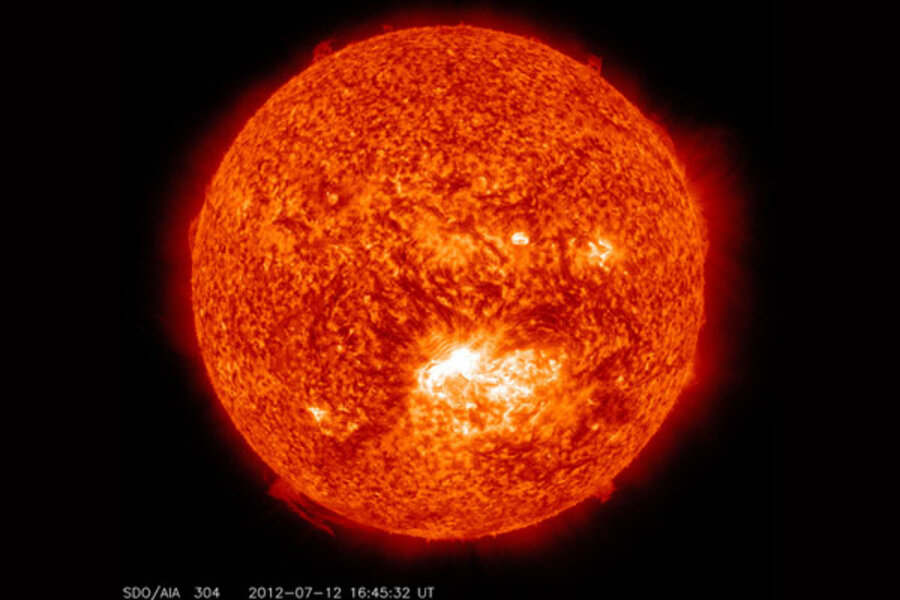Primary violent space weather concern for next decade: the sun
Loading...
A new report based on input from the science community outlines the most pressing objectives over the next decade for studying the sun and the far-reaching effects of solar activity. The report, which was released yesterday (Aug. 15) by the National Research Council, identifies specific science goals and provides recommendations for how to maintain robust and effective programs despite budgetary constraints.
The study is the council's second decadal survey for solar and space physics. The committee that wrote the 454-page report, led by Daniel Baker of the University of Colorado in Boulder, pinpointed the top research priorities in heliophysics for the decade spanning 2013 to 2022.
More than 85 scientists and space system engineers contributed to the study, which aims to guide the ongoing and future initiatives of government agencies, including NASA, the National Science Foundation and the National Oceanic and Atmospheric Administration.
The report emphasizes the need for research to better understand the sun, how it interacts with Earth and other bodies in the solar system, and the origins of potentially harmful space weather, said University of Michigan professor Thomas Zurbuchen, vice chairman of the decadal survey.
"We really have a feeling that the next decade is one that really moves us from a decade focusing to understand drivers of space weather to one that is focused on the responses of that," Zurbuchen told reporters in a news briefing in Washington today. [The Sun's Wrath: Worst Solar Storms in History]
The decadal survey's recommendations focus on the types of missions that should be pursued, and how mission planners can keep these endeavors cost-effective without sacrificing their potential scientific return.
The report also suggests establishing a new line of midsize missions — ones with price tags between $4 million to $9 million — andencourages cooperation internationally and between agencies as a way to take advantage of available resources.
"The proposed strategy directed at NSF, NASA, and also NOAA is one that recognizes the increased societal importance of solar and space physics, and how important it is to tackle these new opportunities with a diverse set of tools – from miniature satellites like cubesats to moderate and large missions," Zurbuchen said.
The primary scientific goals established by the decadal survey are:
- To investigate the origins of the sun's activity and to study solar variations.
- To examine the relationship between the sun and Earth by studying variability in Earth's magnetosphere, ionosphere and atmosphere in response to solar and terrestrial activity.
- To understand how the sun interacts with the interstellar medium and other bodies in the solar system.
- To characterize the processes that occur in the heliosphere and throughout the universe.
The report recommends expanding NASA's Heliophysics Explorer program by $70 million per year, which would allow for the launches of more midsize and smaller Explorer missions. These types of initiatives are important, Baker said, because they are more adaptable and nimble than the agency's larger flagship missions and historically provide breakthrough science.
Since the report takes budgetary constraints into account, the committee's recommendations do not require additional funding, but are meant to rebalance the existing costs of various programs.
"To our knowledge, no one has offered us new money right now, so we have to be as creative budgetarily as we can," Baker said.
The survey also suggests ways to foster the development of new technology and to engage the community, such as by investing in science centers or other channels that educate and empower the next generation of scientists,
The decadal survey was sponsored by NASA and the National Science Foundation.
Follow Denise Chow on Twitter @denisechow or SPACE.com @Spacedotcom. We're also on Facebook and Google+.







